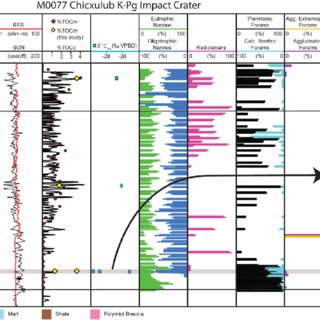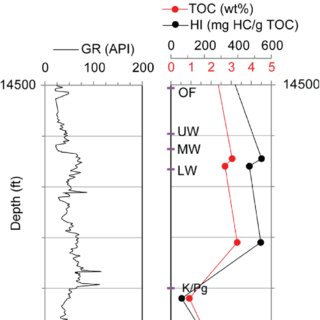March 2022
·
190 Reads
·
7 Citations
Marine and Petroleum Geology
Deposition of the Paleocene-Eocene Wilcox Group (Gp) in the northern Gulf of Mexico (GoM) occurred during dramatic global climate and regional tectonic change. Key drivers impacting the GoM over this time were 1) significantly enhanced runoff and sediment supply from the developing Laramide hinterland, 2) intense global warming culminating in the Paleocene–Eocene Thermal Maximum (PETM) at ∼56 Ma, and 3) proposed Paleogene restriction of the GoM as Cuba docked with Yucatan-Bahamas-Florida. In this paper, we investigate biological and organic geochemical responses to these drivers across the PETM and identify spatial variations in productivity, oxygenation, and ultimately, ventilation. The PETM has been identified by calcareous nannofossil marker taxa and/or excursion taxa from the genera Rhomboaster and Discoaster that exclusively existed during the event. A calcareous nannofossil transition from cool eutrophic to warm oligotrophic assemblages occurs across the PETM broadly over the GoM suggesting that surface water nutrient supply decreased due to slowing circulation or increased sequestration of nutrients along the margins. Associated radiolarian bursts indicate additional factors, such as eustacy and runoff, may have modulated nutrient supply. Benthic habitats were impacted as agglutinated foraminifera, which were dominant in the Paleocene, disappeared at the PETM over submarine fan environments while calcareous benthic forams remained largely absent until the late Eocene. Deoxygenation may have contributed to benthic ecosystem decline as marine kerogen enrichment is noted broadly in the middle Wilcox and PETM. Total organic carbon is generally <3% except in more isolated marginal settings suggesting that deep-basin dysoxia co-existed with a variably enhanced oxygen minimum. We suggest these biotic and organic geochemical responses reflect connection to the Global Ocean during the PETM, with ventilation reduced but not eliminated by increases in salinity stratification due to runoff and reductions in deeper water entry into the GoM at gateways.







